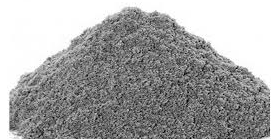Surveying had its origins in ancient Egypt. The Great Pyramid of Khufu at Giza was built in 2700 BC, 755 feet long and 480 feet high. Its nearly perfect square and north-south orientation affirm the ancient Egyptian’s knowledge of surveying. Evidence of some form of boundary surveying (as early as 1400 BC) has been found in the fertile valleys and plains of the Tigris, Euphrates and Nile rivers. Clay tablets of the Sumerians show records of land measurement and plans of cities and nearby agricultural areas. Boundary stones marking land plots have been preserved. There is a representation of land measurement on the wall of a tomb at Thebes in Egypt (1400 BC) showing head and rear chainmen measuring a grain field with what appears to be a rope with knots or marks at uniform intervals. Two are of high estate, according to their clothing, probably a land overseer and an inspector of boundary stones.
There is some evidence that, in addition to a marked cord, wooden rods were used by the Egyptians for distance measurement. The Egyptians had the groma, which was used to establish right angles. It was made of a horizontal wooden cross, pivoted at the middle and supported from above. A plumb bob was hung from the end of each of the four arms. A plumb bob is a shaped weight that hangs from a string. Because of the weight, the string will always be vertical. By sighting along each pair of plumb bob cords in turn, the right angle could be established. The device could be adjusted to a precise right angle by observing the same angle after turning the device approximately 90°. By shifting one of the cords to take up half the error, a perfect right angle would be obtained.
Egyptian gromaThere is no record of any angle-measuring instruments of that time, but there was a level consisting of a vertical wooden A-frame with a plumb bob supported at the peak of the ‘A’ so that its cord hung past an indicator, or index, on the horizontal bar. The index could be properly placed by standing the device on two supports at approximately the same elevation, marking the position of the cord, reversing the ‘A’, and making a similar mark. Halfway between the two marks would be the correct place for the index.
A - frameThus, with their simple devices, the ancient Egyptians were able to measure land areas, replace property corners lost when the Nile covered the markers with silt during floods, and build the huge pyramids to exact dimensions. The Greeks used a form of log line for recording the distances run from point to point along the coast while making their slow voyages from the Indus to the Persian Gulf about 325 BC.
The Greeks introduced the astrolabe, which is an instrument to measure the altitude of stars above the horizon, in the 2nd century BC. It took the form of a graduated arc suspended from a hand-held cord. A pivoted pointer that moved over the graduations was pointed at the star. The instrument was not used for nautical surveying for several centuries, remaining a scientific aid only.
During their occupation of Egypt, the Romans acquired Egyptian surveying instruments, which they improved slightly and to which they added the water level and the plane table. About 15 BC, the Roman architect and engineer Vitruvius mounted a large wheel of known circumference in a small frame, in much the same fashion as the wheel is mounted on a wheelbarrow; when it was pushed along the ground by hand it automatically dropped a pebble into a container at each revolution, giving a measure of the distance travelled. It was, in effect, the first odometer.
Vitruviu's first odometerThe water level consisted of either a trough or a tube turned upward at the ends and filled with water. At each end there was a sight made of crossed horizontal and vertical slits. When these were lined up just above the water level, the sights determined a level line accurate enough to establish the grades of the Roman aqueducts. In laying out their great road system, the Romans are said to have used the plane table. It consists of a drawing board mounted on a tripod (a three legged stand (similar to that used by photographers) or other stable support.
It also consists of a straightedge ruler, usually with sights for accurate aim (the alidade) to the objects to be mapped, along which lines are drawn. It was the first device capable of recording or establishing angles. Later adaptations of the plane table had magnetic compasses attached. Arab traders brought the magnetic compass to the west in the 12th century AD. Plane tables were in use in Europe in the 16th century. Surveyors practiced the principle of graphic triangulation and intersection.
Plane table
In 1615 Willebrord Snell, a Dutch mathematician, measured an arc of meridian by instrumental triangulation. In 1620 the English mathematician Edmund Gunter developed a surveying chain, which was superseded only by the steel tape in the beginning of the 20th century. A surveyors chain consists of a series of links, each link about 0.2m long, used to measure distances accurately. Every 10 links (about 2m) has a small disc hanging from the chain, so that the position can be accurately measured.
Surveyors chain/Gunters chainThe study of astronomy resulted in the development of angle-reading devices that were based on arcs of large radii, making such instruments too large for field use. With the publication of logarithmic tables in 1620, portable angle measuring instruments came into use. They were called topographic instruments, or theodolites. They included pivoted arms for sighting and could be used for measuring both horizontal and vertical angles. Magnetic compasses may have been included on some. The vernier, an auxiliary scale permitting more accurate readings (1631), the micrometer microscope (1638), telescopic sights (1669) and spirit levels (about 1700) were all incorporated in theodolites by about 1720.
The development of the circle-dividing engine about 1775, a device for dividing a circle into degrees with great accuracy, brought one of the greatest advances in surveying methods, as it enabled angle measurements to be made with portable instruments far more accurately than had previously been possible.
By the late 18th century modern surveying can be said to have begun. One of the most notable early feats of surveyors was the measurement in the 1790s of the meridian from Barcelona, Spain, to Dunkirk, France, by two French engineers, Jean Delambre and Pierre Méchain. This was to establish the basic unit for the metric system of measurement. Many improvements and refinements have been incorporated in all the basic surveying instruments. These have resulted in increased accuracy and speed of operations and have opened up possibilities for improved methods in the field.
During the nineteenth century, the combination of a hot air balloon and a camera were used to produce maps and plans. It was difficult to survey large areas because the balloons were slow moving and a new photographic negative had to be loaded into the camera after each photograph was taken. In 1862 union soldiers used cameras mounted in hot air balloons to map behind the confederate lines.
It was not until the turn of the twentieth century, with the developments of the aircraft and invention of the roll of photographic film, that aerial photographs started to be used extensively within the survey industry. The first light wave Electronic Distance Measurement instrument was developed in 1943 to measure the velocity of light. Once the velocity of light was known, it was then possible to reverse the process so that a distance could be measured. In 1954, the light wave was replaced by a radio wave to increase the distance that could be measured. In the late 1960s, lasers were first used with EDMs.
In the mid to late 1970s, the United States of America sent their first Global Positioning System satellites into space. The final development was the extensive use of computers to perform most common data processing and recording of survey data.





















